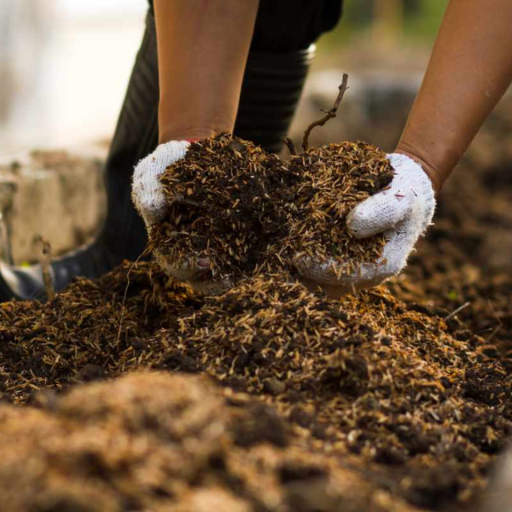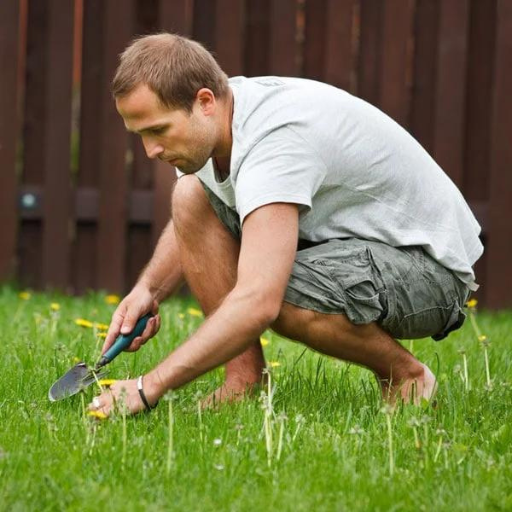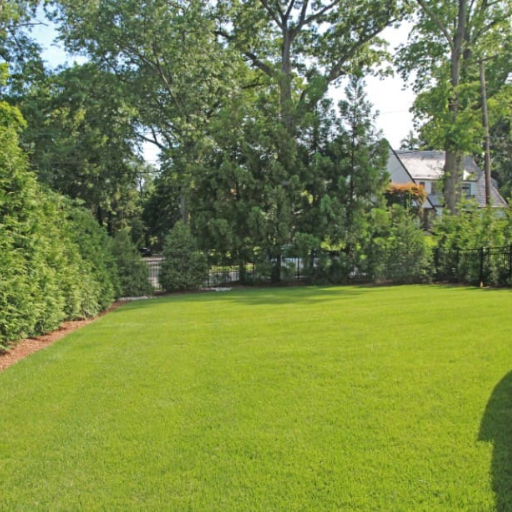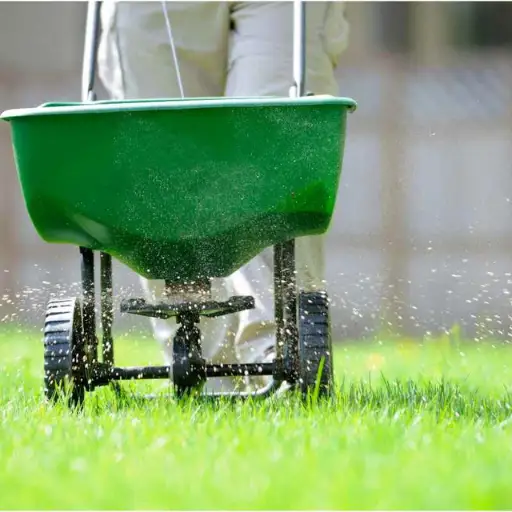Maintaining a healthy lawn requires careful attention to various factors, including soil pH. Soil pH is crucial in nutrient availability, affecting how well your grass can absorb essential minerals. In this blog, we will explore the significance of soil pH, mainly focusing on how elemental sulfur can be used effSulfurly to lower pH levels in your lawn. By understanding the relationship between sulfur and soil aciditSulfureowners can take informed steps toward creating a vibrant and thriving outdoor space. We will cover the benefits of adjusting soil pH, how to apply sulfur correctly, and Sulfuror monitoring your soil’s health over time. Join us as we delve into the science of lawn care and learn about the best practices for achieving the lush lawn you’ve always desired.
What is Elemental Sulfur and How Does it Benefit Lawns?

Using Elemental Sulfur as an Amendment in Soil
Elemental sulfur is a natural, sulfur available, effective soil amendment used to bring down the pH of soils. It is added to alkaline soils and is then transformed with the aid of soil bacteria into a chemical form, that of sulfuric acid, which lowers the Ph. This helped improve the levels of secondary nutrients such as iron and manganese which are usually difficult to obtain in high PH environments. Besides helping in grass nutrition by improving its soil acidity in elemental form, sulfur ensures the proSulfuril microbial health needed for healthy lawns. Correct practices may be employed to ensure that this amendment is beneficial to lawns that are not so acidic or alkaline that they cause plant stress by altering the soil pH quickly.
How is Sulfur Used to Lower SSulfur?
The lowering of soil pH by sulfur happens through the sulfuric soil microbiology process. When added to the soil in the elemental form, sulfuric acid will be acted upon by soil bacteria to create sulfuric acid through serial chemical changes. The well-heat bacteria and moist environment mostly conduct such transformation. As the sulfate is oxidized, it combines with the water present in the soil and undissociated ions to form acid. The acid anions combine with hydrogen positively charged ions such as calcium, magnesium, and potassium, and the hydrogen ions remain, resulting in a lower soil pH. This reducing pH relatively increases nearly all essential minerals, making them more available for the pplant’suptake, thereby enabling the improvement of nutrients and the health of the rash.
Paying Attention to the Benefits of Sulfur in the Maintenance of Turf Grass
Using sulfur for turf grass Sulfur has several essential benefits. To begin with, it assists in improving such soil parameters as soil pH and acidifying the soils for the beneficial grasses. This adjustment enhances not only the nutrient use, particularly iron and manganese but also the color as well as health of the grass. Secondly, soil application of sulfur enhances the miSulfurzers of the soil by boosting the microbial activities in the soil for proper nutrient cycling. In addition, sulfur has been utilized as a sulfur biological control agent and has the potential to help control some turf diseases and thus maintain green turf grass. Finally, the slow release of this element ensures continuous effects, and therefore, fewer applications of sulfur are required. Sulfure should be favorable for the health of the grass.
How to Apply Sulfur to Your Lawn Effectively?
Best Methods to Apply Sulfur Pellets
When applying sulfur pellets to your lawn, consider the following methods for optimal results:
- Soil Testing: Begin by conducting a soil test to determine your turf’s current pH level and specific sulfur requirements. This will help you establish the correct amount to apply.
- Uniform Distribution: Spread the sulfur pellets evenly across the lawn using a calibrated lawn spreader. Ensure the application rate aligns with the recommendations based on your soil test results, typically ranging from 20 to 50 pounds of sulfur per acre.
- TiminSulfurly sulfur in early springSulfurll when the grass is actively growing. Avoid application during peak heat to minimize stress on the grass.
- Watering: After application, water the lawn thoroughly to help dissolve the pellets and activate the sulfur. This will also prevent any potential burn to the grass.
- Reapplication Schedule: Monitor soil pH periodically and reapply sulfur as needed, usuaSulfurery 2-3 years, depending on soil conditions and grass health.
Using a Spreader vs. Sprayer for Application
When deciding between a spreader and a sprayer for applying sulfur to your lawn, iSulfursential should consider the type of application required. A spreader is ideal for granular products like sulfur pellets, allowing for even distribution across larger areas. This method helps ensure that the sulfur is applied unifSulfur, which is crucial for maintaining soil health and grass vigor. On the other hand, a sprayer is more suitable for liquid sulfur applications, often used for more immediate results or when targeting specific areas. Liquid applications can penetrate the soil faster, providing quicker absorption, but may require more frequent reapplication. Ultimately, the choice depends on the particular lawn treatment goals and preferences. For best results, align your method with the proven requirements of your turf and the product used.
Recommended Amount of Sulfur per Square Foot
For effective lawn treatment, the recommended amount of sulfur varies dependinSulfuroil conditions and specific grass types. Generally, applying approximately 0.1 to 0.2 pounds of sulfur per 100 square sulfur is advisable. This translates to around 1 to 2 pounds per 1,000 square feet. Higher rates nearing 2 to 4 pounds per 1,000 square feet may be necessary for severely alkaline soils to achieve the desired pH balance. Always conduct a soil test before application to tailor the sulfur dosage to your lawn’s specific needs and avoid over-application, which can harm grass health.
What is the Ideal Soil pH for a Healthy Lawn?

Signs of High pH Levels in Lawn Soil
Long-term high pH levels in lawn soil can show severe symptoms that affect grass health. Poor grass density or lethargy is a common sign that can often be seen. This is often a result of a deficiency of certain essential nutrients caused by the alkaline conditions which hinder the availability of these nutrients. In addition to these signs, you might also spot a yellowing of the grass tips, especially new growth, as plants have trouble absorbing nitrogen. Some, including dandelions and plantain, are other weeds found in high-pH soil because these weeds flourish in alkaline soils. Similarly, if the soil is sandy or coarse in wet conditions, then there is definitely a pH imbalance, which most grasses will not adapt to. Routine tests are, therefore, critical because they will help assess pH, and any further actions needed to restore lawn health will also be taken.
How to Check Soil Acid Content
Several approaches can be followed when testing soil pH levels and its acid content. The easiest method is using a soil pH test kit, which usually consists of a container for sampling and pH test strips. After removing any obstinate flower pod debris, you will first take soil samples from all parts of your lawn. Then, a portion of the soil is taken in a container, and distilled water is mixed with it to form a composition of the soil and water. After that, a pH strip is put into the mixture, and the color attained is compared to that on the pH scale provided. Some people prefer using a more hi-tech approach with a digital pH meter. In this case, you only have to immerse the electrode into the soil spherical sample, and once the reading is stable, you take it. The last option is for those readers who would like to have their soil analyzed professionally by sending a sample to their local extension office or other soil testing facilities where they will receive a report on its pH values and available nutrients. It is essential to conduct testing after a few years to keep track of developments and maintain the right conditions for a healthy lawn in a house.
The Effects of Soil pH on Plant Growth
Adjusting soil pH is one of the methods used to achieve proper plant growth since different species of plants have different requirements in terms of the pH level. If your soil is too acidic (pH lower than 6.0), adding lime, which is made mainly of calcium carbonate, will help to raise the pH. The amount of lime to be applied will depend on the existing soil ph level and the soil type, as rule of thumb, liming at 50 pounds of lime per 1000 square feet land could be effective. On the opposing side, if your soil pH ranges above 7.5, sulfur or Aluminium sulfate can bring down the pH. These amendments, such as sulfur, work by gradually decreasing soil pH by the process of origin. It is wise to perform soil re-testing after applyingn amendments that seek to change thetor to determine whether the ideal pH level has been attained becathe changes will likely not happen overnight. Careful observation and alterations as required will create an atmosphere suitable for well-grown – healthy plants.
How Does Soil Type Affect Sulfur Application?

Different Soil Types Encompassing Inclusion of Soil Application
It is equally important to know the various classifications of soils for proper sulfur adoption since each of the soils is unique in its structure, which determines the availability and retention of nutrients in the soil. Sandy soils are categorized as having large particles , making them drain rapidly , although this means a low nutrient retention capacity , and as such, more application of sulfur is needed to keSulfurdity levels up. Such as in clay soils sized water-holding particles, which also do well in nutrient-holding may sometimes lead to problems of too much breakup of soil structures causing slow rates of sulfur reactions. These are soils with a combination of sand, silt, and clay. As such, they are soils reasonably ideal for crop production and probably do not need many alterations in sulfur levels. Therefore, these considerations must be made before a schedule on when to apply sulfur so that the plant’s nutrients are not soil pH limited for optimum growth.
The Effect of Soil Texture on the Need for the Element Sulfur
Due to its effect on the water holding capacity, drainage, or the nutrient status of the soil, the texture of the soil is a determining factor when it comes to sulfur needs. In the case of sandy soils, because of rapid drainage, sulfur will be leached quickly. Hence, it will need to be applied more often in order to achieve the acidity effect. The compacted clay soils, on the other hand, are also efficient in retaining nutrients, so the frequency of sulfur treatments will be lower because the appending of sulfur will be slow. ASulfur, anywhere between sandy and clayey soils, says that its need for sulphuric can be more moderate because it holds moisture and nutrients quite well. These and other differences enable effective sulfur application methods, which suit the plants’ soil properties and nutritional status.
Adjusting Sulfur Application for Clay vs. Sandy Soils
Apart from discussing the sulfur methods used on sandy and clay soils, it is also worthwhile to differentiate the two soils. Sandy soils possess a lot of moisture but drain very quickly. Hence, more frequent sulfur application is required to maintain acidity levels. This may call for Sulfur topdressing 24 Sulfurte fertilization where, rather than supplementing fertilization with a few applications of bulk soil amendment with liquid nutrients, consider dropping tiny amounts of sulfur to the plants iSulfurd to limit their nutrient layout. On the other hand, clay soils, being compact, will ensure that more nutrients are retained, and therefore, sulfur will have fewer higher doses. Keeping a close eye on the soil pH in these soils would make it possible to plan how best to apply sulfur in such soil sulfur to achieve maximum vegetation growth.
What Precautions Should Be Taken When Applying Sulfur?

Identification and comprehension of over-applicated practice and soil toxicity
Applying sulfur has always made me aware of the risks of over-application. This is because too much of it can lead to soil toxicity, which is harmful to plants and beneficial microorganisms in the soil. Over-application symptoms typically include chlorosis, arrested elaiosome development, and, in extreme cases, an increase in soil acidity, leading to plant death. I minimize these risks by constantly sticking to the recommended application rates. I have done the soil tests to show this and monitor pH levels regularly to ensure no rapid changes. It is also essential to adopt a comprehensive fertilizer technique, which includes adding organic matter to counteract these practices of adding sulfur and improving furl health. With this meticulous management of plants, they continue to grow well and the soil is not depleted.
This Use of Sulfur May Cause Lawn Burn
In my view, sulfur burn symptoms in patients’ lawns include yellowing of grasses and dry tips of the blades. More often than not, this happens after I have poured excessive amounts of sulfur or applied it tSulfury times without closely monitoring the pH level. I try to look for factors such as brown spots on the grass since withered brown patches are sometimes quite different from the healthy areas of green grass. Also, the over-acidifying of soil and the die-off of beneficial organisms, for instance, earthworms, are other signs that indicate the effects of sulfur burn in a lawn. This means that I apply less of it or think about using lime to help with imbalances.
How to Handle Sulfur Products: Important Health Safety Guidelines
While performing any activities with sulfur products, I do not compromise on safety. I always put on the required personal protective equipment such as gloves and goggles, and sometimes a dust mask so that I do not get facial irritations or even respiratory complications. I also need to operate in well-ventilated rooms to prevent inhaling any fumes. I also make it a point that inactive chemicals such as sulfur products are stored in their original container where moisture heat cannot reach, and the container is properly closed to avoid leaks. I apply sulfur only after reading and understanding the label and only use the amount required for the task to avoid excessive use. Last but not least, measure that I adopted is to make my workplace tidy by washing my hands and tools after working with sulfur.
Reference sour
- emental Sulfur – This forum discusses the effectiveness of elemental sulfur, particularly Sulfurrit’s performance in different weather conditions.
- Sulfur Products, Timing, and Rate – This article provides insights into the timing and rate of sulfur application for optimal results.
- Evaluation of a sprayable elemental sulfur fertilizer – A scientific review of elemental sulfur fertilizers, discussing their sulfur content and effectiveness over time.
These sources should help validate the feasibility of using elemental sulfur for lawns.
FreSulfurr Asked Questions (FAQs)

Q: How much sulfur should I put oSulfurrwn?
A: The amount of sulfur you should appSulfurrour lawn will mostly depend on the pH of the soil at the time and the area to be treated. In general, the spread of sulfur per 100 squareSulfurrf lawn, aimed at lowering the pH, will be within the range of about 1 to 2 pounds.
Q: What method works best while applying sulfur to a lawn?
A: Sulfur can be applied in the form of pellets or granules on the grass. This ensures that there is uniformity in application. For large areas, a broadcast sulfur may be used to avoid uneven sulfur application.
Q: How long does sulfur last in a pH sulfur?
A:It may take up to one year before the complete benefits of sulfur on lawn pH are sulfurrated. This is because there isneedsd to convert sulfur to sulfates bySulfurracteria,whichs is a long-winded process.
Q: Can sulfur be used as a sulfur soil acidifier?
A: There is no doubt about this; sulfur serves as a usSulfurrganic soil acidifier. It is instrumental in decreasing the pH of heavier soils, thus enhancing the availability of desirable nutrients to plants, turf grasses, or shrubs like azaleas.
Q: A question asks about the risks involved when one uses sulphur in excess. What is your comment on that?
A: Yes, it is necessary to prevent excess application since this may damage the plants and soil due to toxicity. Adhere to the recommended application rates as per the soil test results.
Q: Is there any chance of Moss using Sundew’s help to get restrained within the grass courtyard?
A: Yes, Sulphur can reduce moss growth since it acts as an acid, and mosses thrive in weak pH. Adding sulphur decreases the pH in soil, creating an environment conducive for grass growth, which will also suppress the growth of moss.






